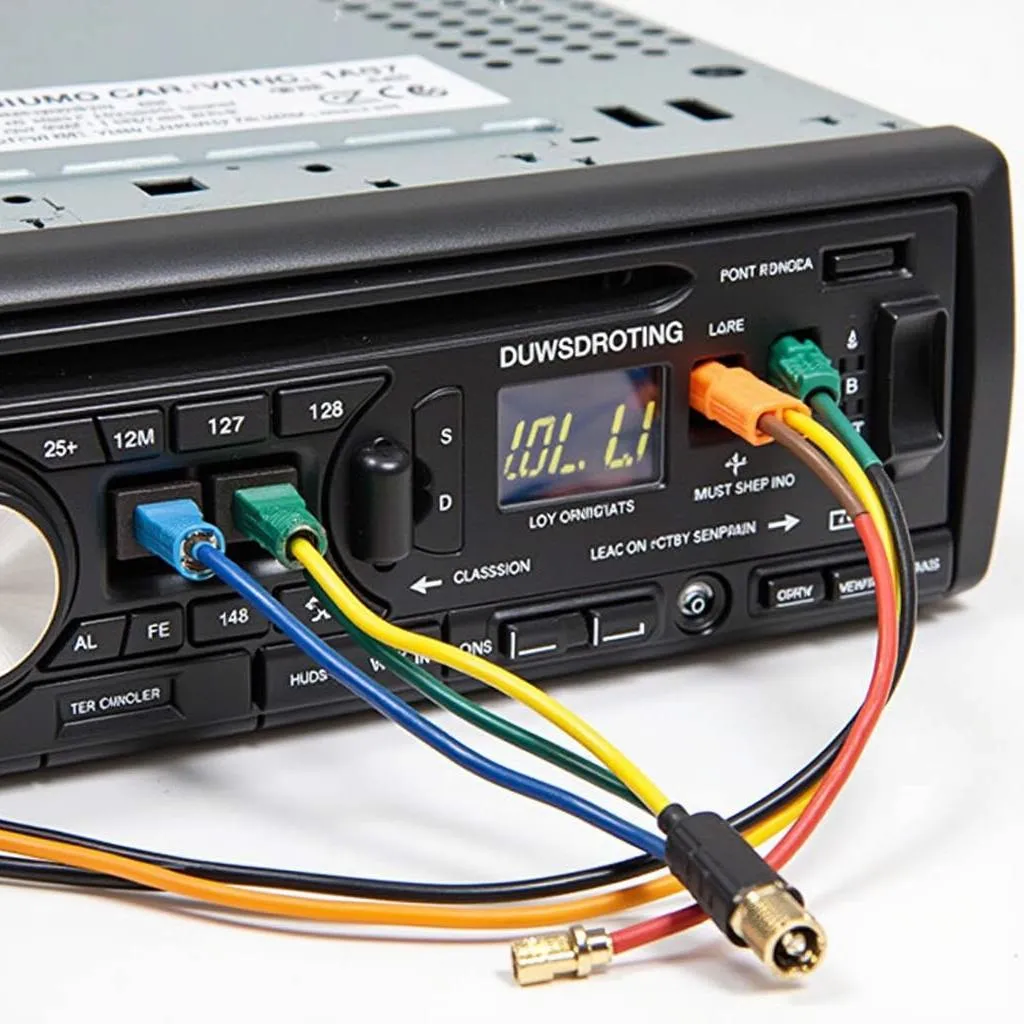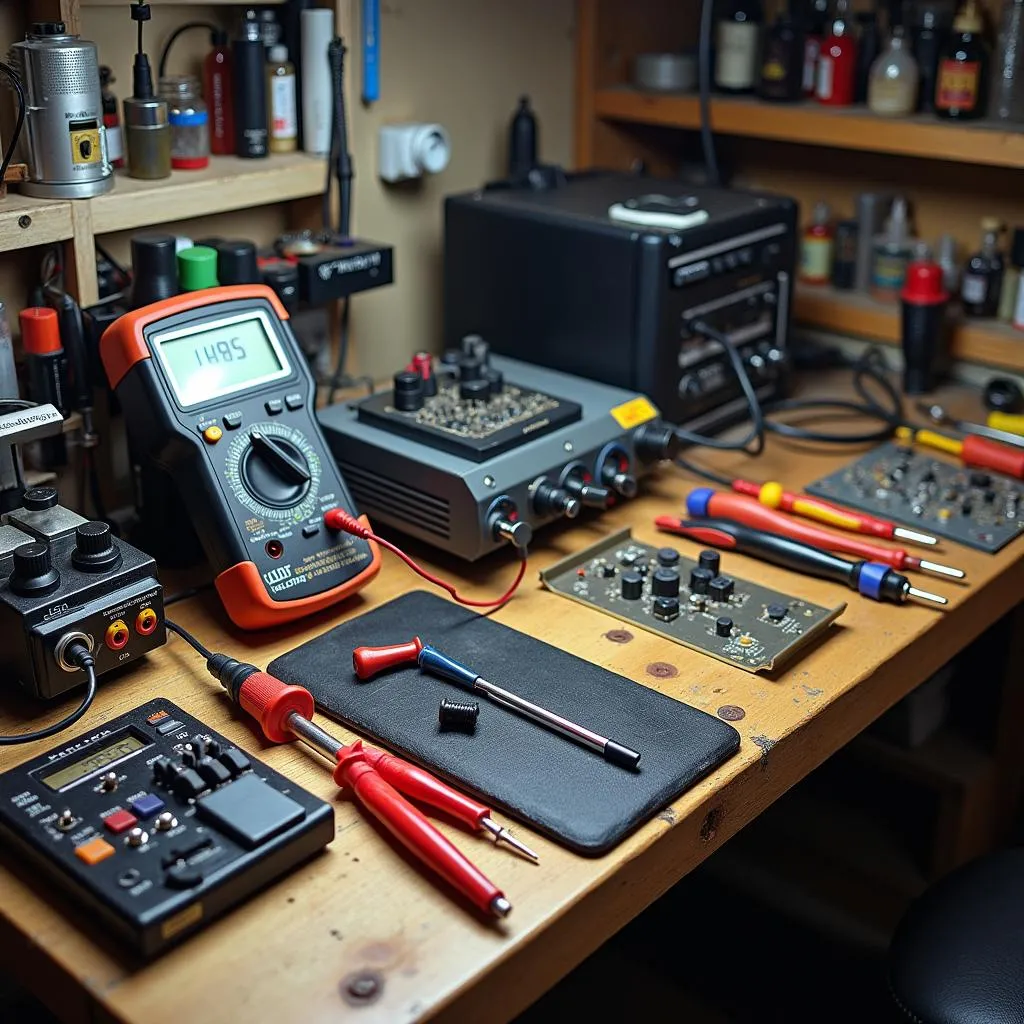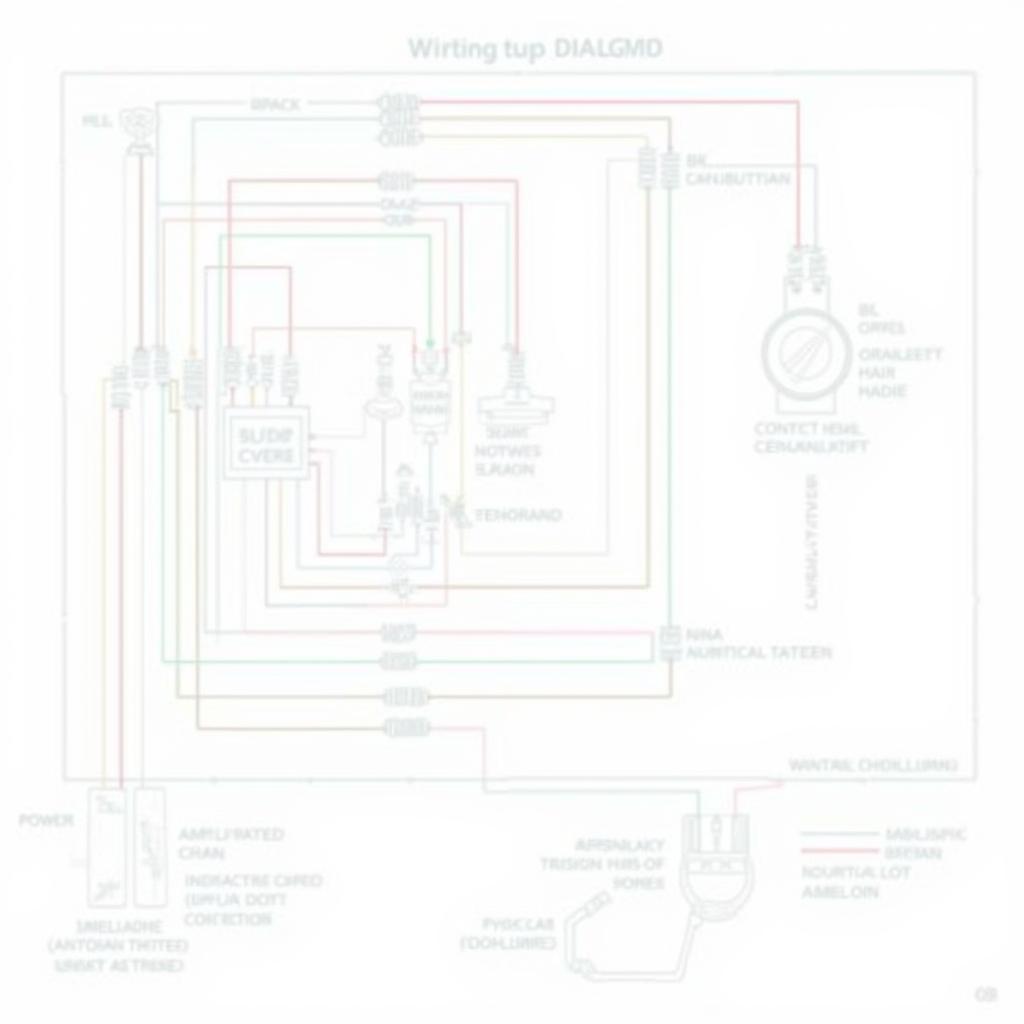We’ve all been there – cruising down the road, your favorite song playing, when suddenly, silence. A malfunctioning car radio can be a major buzzkill. This is especially true with modern compact Class D FM radio systems with integrated Bluetooth, which are becoming increasingly common. While these systems offer great sound and connectivity, they can sometimes present unique challenges when things go wrong.
Understanding Your Class D Car Compact FM Radio Bluetooth System
Class D amplifiers are known for their efficiency and compact size, making them perfect for car audio systems. These systems often combine FM radio functionality with Bluetooth connectivity for streaming music and hands-free calling. Understanding the basics of how these systems work can be helpful when troubleshooting issues.
Common Issues with Class D Car Radio Systems
Several common problems can arise with Class D car radios:
- No Power: The radio doesn’t turn on at all.
- No Sound: The radio turns on, but no sound comes out of the speakers.
- Poor Reception: The FM radio has static, weak signal, or difficulty tuning to stations.
- Bluetooth Connectivity Problems: Issues pairing with your phone, dropped connections, or poor call quality.
- Distorted Audio: The sound that comes out of the speakers is crackly, distorted, or too quiet.
Diagnosing the Root of the Problem
Identifying the cause of the problem is the first step to a solution. Here’s a breakdown of common causes:
1. Power or Ground Issues:
- Check the fuse: A blown fuse is a common reason for a car radio to have no power. Locate your vehicle’s fuse box and consult your owner’s manual to find the correct fuse for the radio.
- Inspect wiring and connections: Loose or corroded wiring to the radio’s power and ground connections can also cause problems.
2. Speaker Problems:
- Listen for a blown speaker: If you hear a buzzing or scratching sound from a specific speaker, it might be blown.
- Check speaker wiring: Inspect the wiring to each speaker for any damage or loose connections.
3. Antenna Problems:
- Check the antenna connection: Make sure the antenna cable is securely plugged into the back of the radio.
- Inspect the antenna mast: A damaged or bent antenna mast can severely impact reception.
4. Bluetooth Module Malfunction:
- Check for software updates: Outdated firmware in the radio or your phone can cause connectivity problems.
- Reset the Bluetooth module: Most car radios have a way to reset the Bluetooth system, often found within the radio’s settings menu.
5. Internal Amplifier Fault:
- Overheating: Class D amplifiers are efficient, but they can overheat if not adequately ventilated.
- Component failure: Internal components within the amplifier can fail over time.
 Car Radio Wiring Diagram
Car Radio Wiring Diagram
Essential Tools for Repairing Your Car Radio
Before you begin any repair work, it’s helpful to have the right tools on hand:
- Multimeter: To test for voltage, continuity, and resistance in electrical circuits.
- Screwdrivers: Various sizes and types (Phillips, flathead) to remove screws and panels.
- Panel removal tools: To prevent damage to your dashboard while removing trim pieces.
- Soldering iron and solder: For repairing broken wires or connections.
- Electrical tape: To insulate and secure electrical connections.
- Bluetooth pairing guide: This can be helpful if you are having trouble pairing your phone.
 Essential Tools for Car Audio Repair
Essential Tools for Car Audio Repair
Step-by-Step Troubleshooting Guide
1. Check the Basics:
- Ensure the car’s ignition is in the “ACC” or “ON” position.
- Verify that the radio is properly plugged into its power source.
- Check the fuse for the radio.
2. Isolate the Problem:
- If you have no power, focus on the power and ground connections.
- If you have power but no sound, check the speaker connections and the speakers themselves.
- For reception issues, inspect the antenna and its connection.
- For Bluetooth problems, try pairing your phone with another device or try a different phone with your radio.
3. Consult Professional Help:
- If the problem persists, it’s best to consult a qualified car audio technician or an authorized dealer. They have the expertise and specialized equipment to diagnose and repair complex issues with your Class D car radio.
FAQs About Car Radio Problems
Q: Why is my car radio only working sometimes?
A: This could be a sign of a loose connection, a failing antenna, or even an internal problem with the radio itself. Wiggling wires and checking connections can help pinpoint the issue.
Q: Can I replace my car radio myself?
A: While possible, it’s recommended to have a professional install it, especially with modern cars that have complex electronics and integrated systems.
Q: Why is my car Bluetooth cutting out?
A: This could be due to interference, distance from your phone, or an issue with the Bluetooth module in your radio or phone.
Q: How do I improve my car radio reception?
A: Ensure your antenna is in good condition and properly connected. You can also consider installing a signal booster if you live in an area with poor reception.
Need Expert Assistance? Contact Cardiagtech!
Cardiagtech specializes in advanced automotive diagnostics, programming, and remote software installation services to resolve a wide range of car electronic issues, including those related to your Class D Car Compact FM Radio Bluetooth system. Don’t let car audio woes ruin your drive!
Contact Cardiagtech Today:
Phone: +1 (641) 206-8880
Email: [email protected]
Office: 276 Reock St, City of Orange, NJ 07050, United States
We’re here to get your car audio system back on track!


